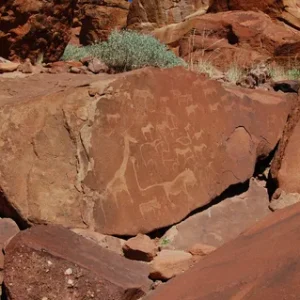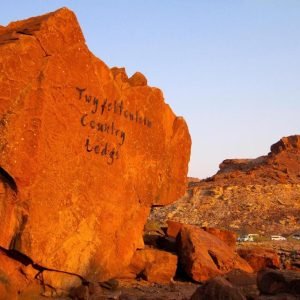Twyfelfontein, also known as /Ui-//aes, is a UNESCO World Heritage Site located in the Kunene region of Namibia. It is famous for its prehistoric rock art, dating back over 6,000 years.
The Twyfelfontein site is one of the largest rock art complexes in Africa. The engravings were made by the region's first inhabitants, the San and Khoikhoi, who carved figures and motifs into the rocks.
Twyfelfontein's rock drawings depict a variety of subjects, including animals, paw prints, hunters and ritual scenes. They provide a fascinating insight into the lives of ancient populations and are considered an important artistic and spiritual expression.
In addition to rock art, Twyfelfontein also boasts other spectacular geological formations, such as engraved mountains, basalt organs and unique rock formations. The surrounding landscape is spectacular, with red hills and impressive rock formations, making it a popular destination for nature lovers.
Twyfelfontein is responsibly managed to ensure its conservation and preservation. Guided tours are offered to visitors to explore the site in a respectful and informative way, with an emphasis on the preservation of rock art and the natural environment.
In short, Twyfelfontein, also known as /Ui-//aes, is a World Heritage Site in Namibia, renowned for its prehistoric rock art. It is a fascinating testimony to the region's ancient history and offers visitors the chance to explore a spectacular natural landscape.





